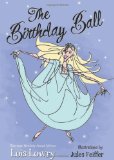Review of Mountains Beyond Mountains, by Tracy Kidder
The Quest of Dr. Paul Farmer, a Man Who Would Cure the World
by Tracy Kidder
read by Paul Michael
Books on Tape, 2003. Unabridged. 9 compact discs, 10 hours, 51 minutes.
I checked out Mountains Beyond Mountains because of how much I was moved by Tracy Kidder’s Strength in What Remains, the story of Deogratias.
In Deo’s story, he was deeply moved by reading one of Dr. Paul Farmer’s books, and he ended up working for Dr. Farmer’s organization, Partners in Health. Deo ultimately established a clinic in Burundi under that organization’s sponsorship.
So when I learned that Tracy Kidder had written an earlier book about Dr. Paul Farmer, I made sure to get my hands on it.
Dr. Farmer’s story is inspiring. From a kid in a large family who lived on a bus, he became a Harvard specialist in infectious diseases and founded an organization that saves thousands of lives in the poorest parts of the world.
One thing I learned from this audiobook is that millions of people in the world die early because they are poor. Dr. Farmer’s work is about bringing healthcare to the poor. He has pioneered ways of battling diseases like drug-resistant tuberculosis and HIV/AIDS that effectively heal poor people who were not being treated. He has now helped people in poverty all over the globe.
This book goes on rather long. But the story is amazing. Tracy Kidder presents Dr. Paul as someone full of quirks and human weaknesses, definitely not a saint, who is yet a remarkable person who is changing the world. I did enjoy listening to it. I might not have gotten all the way through if I had been reading to it, but listening in the car, I did find myself interested in finding out about the next challenge Dr. Farmer faced and overcame.
He began in Haiti, and has made a huge difference there. The whole time I was listening, I grieved for the people of Haiti, knowing that they would later face an earthquake. I am sure that no one is better equipped to help the people of Haiti to recover than Partners in Health, since they already have helped so many people there.
This book will inspire you with the story of one man making a huge difference. It could have been written as a propaganda tool for Partners in Health, but Tracy Kidder does fill the book with facts that show the effectiveness of their methods. He’s not trying to fudge results. He’s not trying to paint Paul Farmer as a saint. He’s telling about a great work that’s being done. Even if you don’t read the book, I highly recommend taking a look at the Partners in Health website at www.pih.org.
Find this review on Sonderbooks at: www.sonderbooks.com/Nonfiction/mountains_beyond_mountains.html
Disclosure: I am an Amazon Affiliate, and will earn a small percentage if you order a book on Amazon after clicking through from my site.
Source: This review is based on a library audiobook from the Fairfax County Public Library.








 The Red Pyramid
The Red Pyramid
